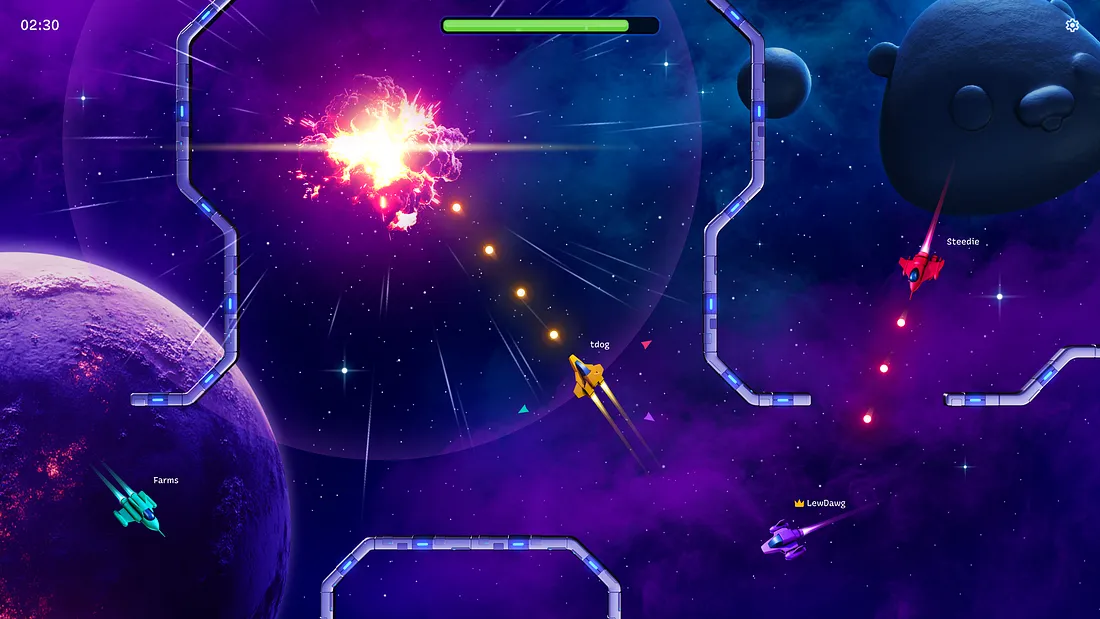Constructing totally onchain video games for the final three years, UK studio Playmint has an inherent drive to always evolve the sector technologically. And this has been underlined in its newest endeavour – Area Shooter, which it describes because the“fastest fully decentralised game in the world” and which is powered by the developer’s personal playerchains expertise.
Playmint’s motivation behind playerchains and Area Shooter was born after the discharge of its autonomous world UGC platform Downstream on Ethereum L2 Redstone in 2024.
Realising its limitations, Playmint CEO David Amor has commented, “Truthfully, the compromises of running a game on a blockchain are significant: computation is expensive; transaction times are slow; hidden information and game update loops are difficult.”
Amor factors out that one explicit drawback is the decentralization tech used for video games to date has “been inherited from DeFi and the attributes of Ethereum or its L2s”. These aren’t the optimum instruments for many video games. Consequently, Playmint has shifted its focus to enhancing decentralised expertise with the intention to make onchain video games higher.
So what’s the answer? Based on the developer, it’s referred to as playerchains, a “kind of technology that’s more decentralised but less crypto”: basically it’s not run on public blockchains.
Tackling one of many core points totally onchain video games have wrestled with, Playmint CTO Iain Gilfeather stated playerchains allow “decentralised games that are for playing, not speculating.” Attributable to public and permissionless blockchains’ inherent monetary methods, video games deployed on these chains are additionally going to be linked to cash. This relationship makes their gamers susceptible to monetary hypothesis. In distinction, Gilfeather defined that “Games on a permissioned chain, where no money exists in the first place, retain play as the dominant activity.”
Due to its game-first design, playerchains additionally clear up a collection of different sensible points equivalent to “real-time multiplayer, familiar tick-based game development, and gasless transactions.”
For a extra in-depth clarification, go to Gilfeather’s substack posts “Why we need Playerchains” and “Playerchain Architecture”.


